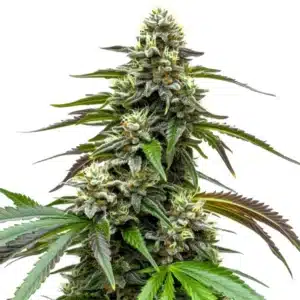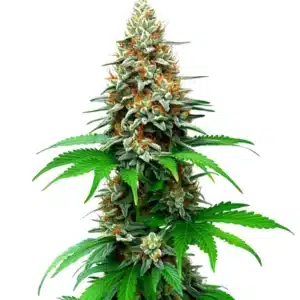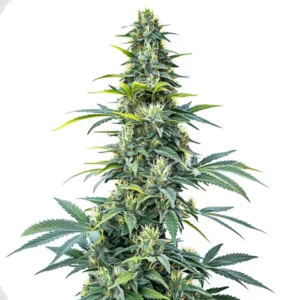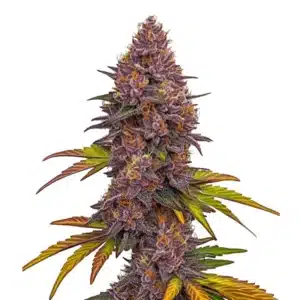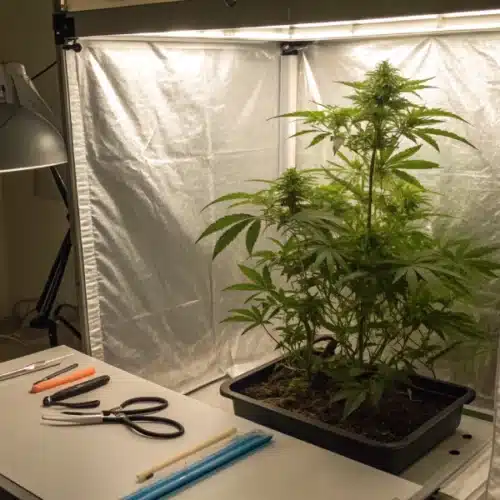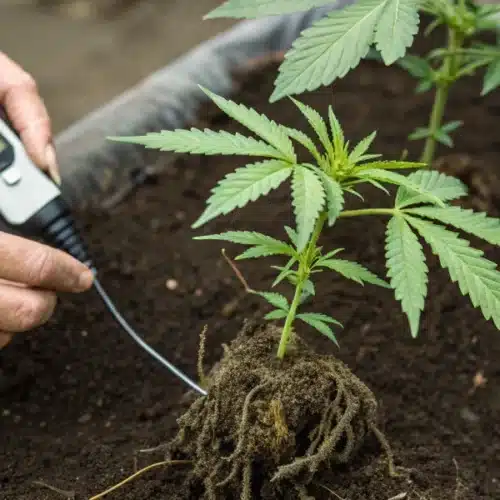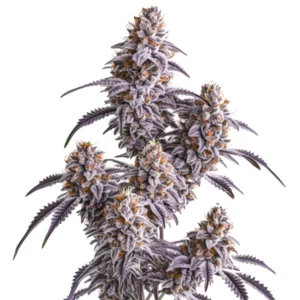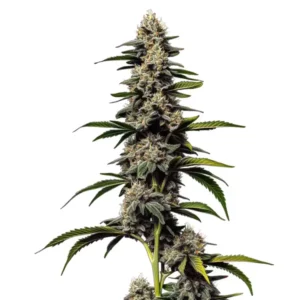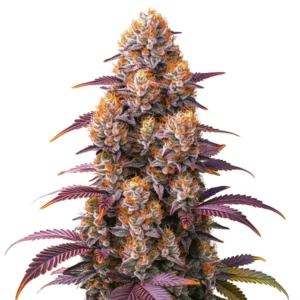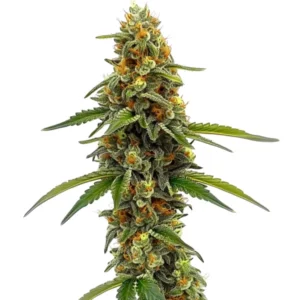What is TAC in weed?
“TAC” represents “total active cannabinoids,” providing valuable insights beyond just THC or CBD levels, encompassing the entire spectrum of compounds within a cannabis strain. But what is the real tac in weed meaning? It refers to the sum of all decarboxylated cannabinoids active in the product. The concept is that by comprehending TAC, enthusiasts can more accurately anticipate the effects of the cannabis they’re consuming, whether through smoking, vaping, or other ingestion methods.
Promos & Deals
The most Popular Cannabinoid
We promise to keep the science simple, but knowing about cannabinoids is important when it comes to weed. This diverse group of natural compounds includes THC and CBD, the most studied and medically relevant ones. A common topic among cannabis users is TAC vs THC, as it helps differentiate the overall cannabinoid profile from the effects of a single compound.
THC
Starting with THC, short for tetrahydrocannabinol (don’t worry, you won’t need to pronounce that tongue twister). It’s the most prevalent cannabinoid and typically receives the most attention, and rightfully so. The euphoric “high” associated with cannabis? That’s largely attributed to THC, along with various potential medical benefits like pain management and insomnia relief.
CBD
Then there’s CBD, often dubbed the “second cannabinoid,” or cannabidiol. Unlike THC, it’s not considered intoxicating, although many individuals find it provides a pleasant sensation, akin to a milder version of caffeine. However, it’s in its wide array of potential medical applications where CBD truly stands out. Apart from potentially improving sleep and reducing anxiety, CBD has shown promise in alleviating pain, distinct from the effects of THC. Preliminary studies even suggest that CBD could promote clearer, healthier skin!
Acidic Cannabinoids
That’s a brief overview for now, but before we continue, here’s a little twist. Cannabinoids, including THC and CBD, exist in an acidic form, which serves as a chemical precursor to the active cannabinoid, meaning it won’t have any effect if consumed. THC’s precursor is “THCA,” while CBD’s is “CBDA.” Keep these names in mind; we’ll revisit them shortly!
Cannabinol (CBN)
CBN is widely recognized as the cannabinoid associated with sleep. Non-intoxicating CBN is linked to a broad spectrum of therapeutic effects. Early research suggests that cannabinol may alleviate pain and enhance sleep quality.
Cannabigerol (CBG)
As a non-intoxicating compound, CBG can potentially mitigate the psychoactive effects of THC, akin to CBD. This allows cannabis users to experience the benefits of THC without experiencing overwhelming highs. While this effect may be influenced by the endocannabinoid system, it could also be attributed to CBG’s interaction with alpha-2 adrenergic receptors, which regulate sympathetic nervous system activity.
Cannabichromene (CBC)
Despite being identified half a century ago, the precise benefits of CBC remain unclear. Nonetheless, it’s understood that like THC and CBD, CBC originates from cannabigerolic acid (CBGA). However, the impact of less common cannabinoids on human biology is still largely unknown.
TAC (Total Aerobic Count) is frequently misinterpreted as Total Active Cannabinoids by newcomers in the industry. However, it actually refers to a different aspect of the plant’s composition. TAC measures the microbial cell count present in a cannabis sample, providing insights into its microbial content.

The Significance of TAC: The Endocannabinoid System
Regardless of the specific cannabinoids under discussion, they all share a common link: the endocannabinoid system (ECS). This intricate regulatory network plays a pivotal role in managing vital biological functions for humans, as well as other mammals and organisms. These functions encompass aspects such as appetite regulation, metabolism, immune response, memory retention, proper sleep patterns, and cellular communication. Discussions around TAC vs THC further illustrate how a complete cannabinoid profile can influence the ECS in different ways.
Remarkably, knowledge about the ECS is still quite limited, even though it plays a key role. It’s only been around three decades since its existence was first identified. Consequently, many contemporary medical professionals remain unaware of its significance.
This knowledge gap underscores the mission to disseminate authoritative cannabis research. By promoting awareness among healthcare providers regarding the legitimacy of cannabis medicine in promoting wellness and health, we pave the way for broader access to this gentle, sustainable botanical solution.
Returning to the discussion of cannabinoids, as we delve deeper into comprehending the entire spectrum of cannabinoids and their functions, we inevitably arrive at the focal point of this discourse: TAC, or “total active cannabinoids.” TAC and its implications, is pivotal in discerning why specific cannabis strains might be preferred over others.
What Constitutes “Active” Cannabinoids?
Distinguishing between TAC vs THC, where the former denotes the aggregate cannabinoids present in a strain while the latter refers to a single cannabinoid, albeit a prominent one, prompts an exploration into the concept of “active” cannabinoids. What exactly do these terms signify, and how does the TAC figure elucidate this?
Recall our earlier discussion on the acidic precursors of cannabinoids, like THCA and CBDA. An “active” cannabinoid denotes one that has undergone decarboxylation, transitioning from its acidic form to a state where it can be assimilated by the endocannabinoid system. This conversion occurs through a process known as decarboxylation.
Decarboxylation
Unveiling the Mechanism Despite its tongue-twisting name, decarboxylation is a straightforward process initiated by heat. This heat can stem from various sources, including smoking or vaporizing flower, or during the production of cannabis concentrates, tinctures, and other derivatives. Consequently, “active” cannabinoids are essentially decarboxylated ones.
Insights Offered by TAC Unlike the conventional THC and CBD percentages found on most product labels, a TAC listing offers a more nuanced and informative perspective. While some labels present TAC as a singular figure denoting the cumulative total of active cannabinoids per unit of measurement, others furnish a detailed breakdown of all active cannabinoids present. This granularity proves invaluable in tailoring the desired cannabis experience.
TAC and Entourage Effect
How TAC in the Entourage Effect Since the advent of modern cannabis research in the 1960s, scientists have postulated that various cannabinoids, along with terpenes, synergistically interact to enhance, modulate, or otherwise influence each other’s effects—a phenomenon known as the entourage effect.
Contemporary clinical studies substantiate this theory, revealing intriguing dynamics. For instance, certain studies indicate that CBD might mitigate some of THC’s potential side effects, such as anxiety and paranoia. Another study suggests that the presence of CBD and CBG can influence THC’s inherent anti-cancer properties.
As research on the entourage effect progresses, one thing is certain: as we learn more about cannabinoid interactions, having detailed information about the cannabinoids in a product becomes a powerful asset. This knowledge not only aids in customizing subjective experiences but also enhances therapeutic outcomes in medical contexts.

Contrasts Between TAC vs THC
In THC testing, the focus lies squarely on one cannabinoid, while TAC analysis delves into the entirety of the cannabis plant profile, encompassing all active components.
While a comprehensive approach is valuable, concentrating on THC is equally vital. Being the primary psychoactive compound in cannabis, THC potency significantly influences the overall user experience, providing consumers with a straightforward starting point when selecting a strain.
How do THC vs TAC Interact?
THC vs TAC components have a mutually influential role in the consumption experience. The entourage effect, a well-known phenomenon, suggests that various cannabinoids and terpenes can collaborate synergistically, enhancing the cannabis consumption experience by incorporating the combined plant profile.
Numerous studies have indicated the benefits of cannabinoid combinations. Their interactions can assist consumers in managing their experience. For instance, research on CBD and its antipsychotic properties suggests it may mitigate THC’s psychoactive effects. Essentially, if someone consumes excessive THC, they can use CBD to attenuate or calm the high.
In recent years, products with specific ratios (such as 1:1 CBD/THC, 2:1, 10:1, etc.) have emerged, offering consumers a variety of cannabinoid balances and associated effects.
As cannabis research receives more funding, insights into other cannabinoids and their impact on user experience are expanding. Cannabigerolic acid (CBGA), recognized as the precursor to multiple cannabinoids, including CBD and THC, is considered the foundational compound that eventually breaks down into various cannabinoids, including THCA. Evaluating a plant’s TAC enables consumers and scientists to better grasp each strain’s potential effects and advantages.
Further clinical investigations will shed light on the relationship between THC and TAC compounds, further empowering cannabis consumers.
FAQs of TAC vs THC
What is the real meaning of TAC in weed?
TAC stands for “Total Active Cannabinoids” and refers to the total concentration of all decarboxylated, or “active,” cannabinoids in a cannabis product. Unlike THC or CBD alone, TAC gives a broader understanding of the plant’s full cannabinoid profile, helping users predict the overall effects more accurately.
How is TAC different from THCA?
TAC includes only the cannabinoids that have been activated through decarboxylation, while THCA is an acidic precursor to THC. THCA itself is non-psychoactive until it is heated. So, in the comparison of TAC vs THCA, TAC reflects the compounds that are actually bioavailable and effective after consumption.
Is TAC the same as THX?
No, TAC and THX are not the same. While TAC refers to total active cannabinoids in cannabis, THX is a certification standard originally related to high-fidelity audio/visual reproduction in cinemas and home theaters. The confusion between TAC vs THX is common but entirely unfounded in cannabis science.

